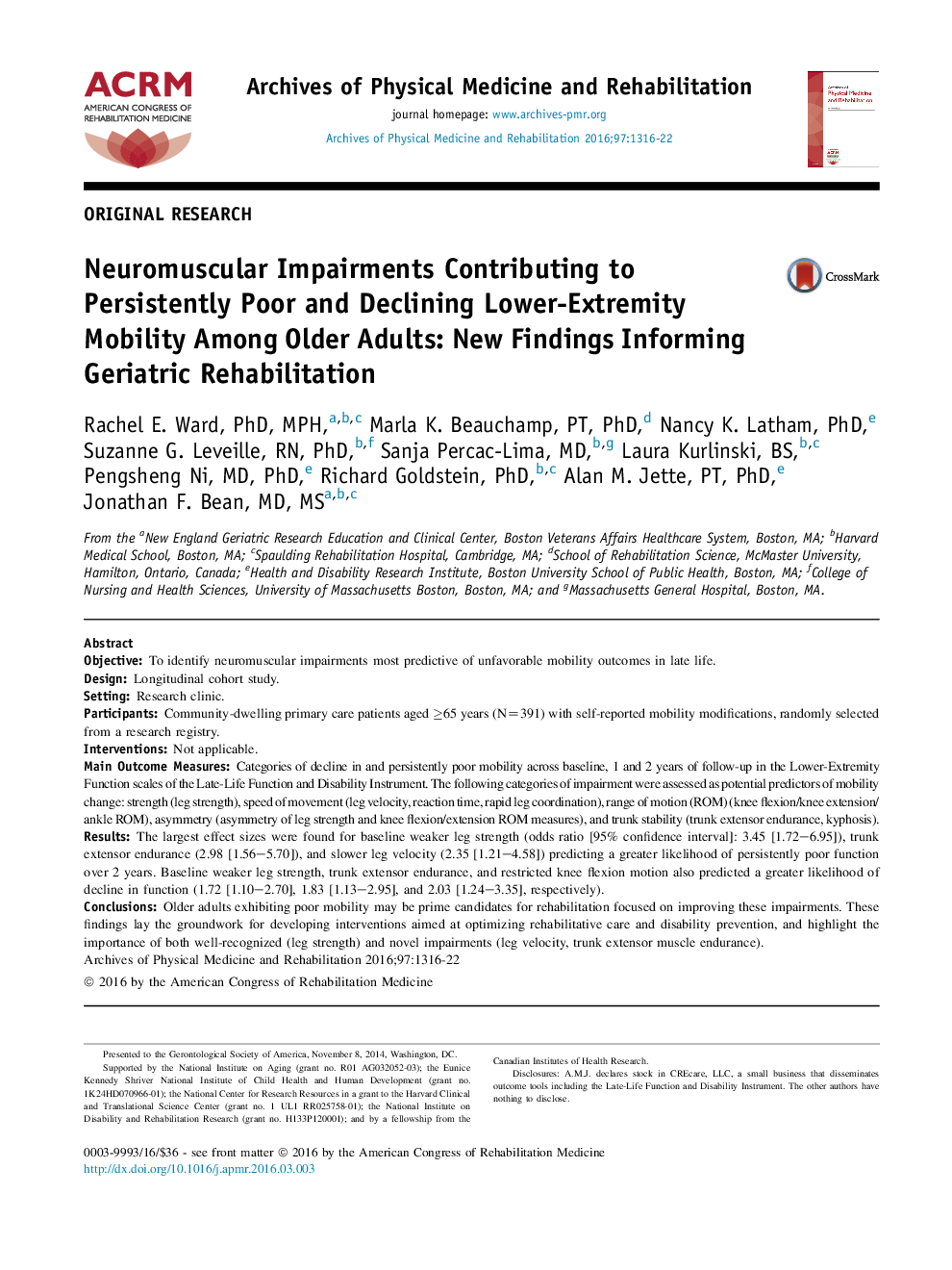| کد مقاله | کد نشریه | سال انتشار | مقاله انگلیسی | نسخه تمام متن |
|---|---|---|---|---|
| 3447867 | 1595664 | 2016 | 7 صفحه PDF | دانلود رایگان |
ObjectiveTo identify neuromuscular impairments most predictive of unfavorable mobility outcomes in late life.DesignLongitudinal cohort study.SettingResearch clinic.ParticipantsCommunity-dwelling primary care patients aged ≥65 years (N=391) with self-reported mobility modifications, randomly selected from a research registry.InterventionsNot applicable.Main Outcome MeasuresCategories of decline in and persistently poor mobility across baseline, 1 and 2 years of follow-up in the Lower-Extremity Function scales of the Late-Life Function and Disability Instrument. The following categories of impairment were assessed as potential predictors of mobility change: strength (leg strength), speed of movement (leg velocity, reaction time, rapid leg coordination), range of motion (ROM) (knee flexion/knee extension/ankle ROM), asymmetry (asymmetry of leg strength and knee flexion/extension ROM measures), and trunk stability (trunk extensor endurance, kyphosis).ResultsThe largest effect sizes were found for baseline weaker leg strength (odds ratio [95% confidence interval]: 3.45 [1.72–6.95]), trunk extensor endurance (2.98 [1.56–5.70]), and slower leg velocity (2.35 [1.21–4.58]) predicting a greater likelihood of persistently poor function over 2 years. Baseline weaker leg strength, trunk extensor endurance, and restricted knee flexion motion also predicted a greater likelihood of decline in function (1.72 [1.10–2.70], 1.83 [1.13–2.95], and 2.03 [1.24–3.35], respectively).ConclusionsOlder adults exhibiting poor mobility may be prime candidates for rehabilitation focused on improving these impairments. These findings lay the groundwork for developing interventions aimed at optimizing rehabilitative care and disability prevention, and highlight the importance of both well-recognized (leg strength) and novel impairments (leg velocity, trunk extensor muscle endurance).
Journal: Archives of Physical Medicine and Rehabilitation - Volume 97, Issue 8, August 2016, Pages 1316–1322
